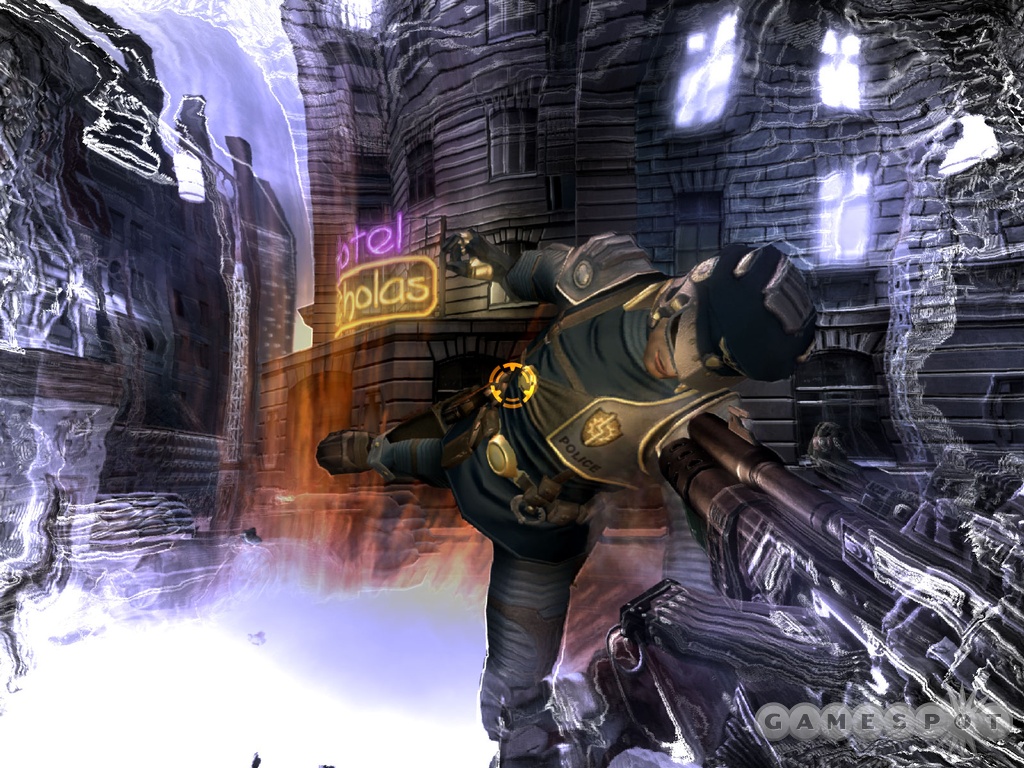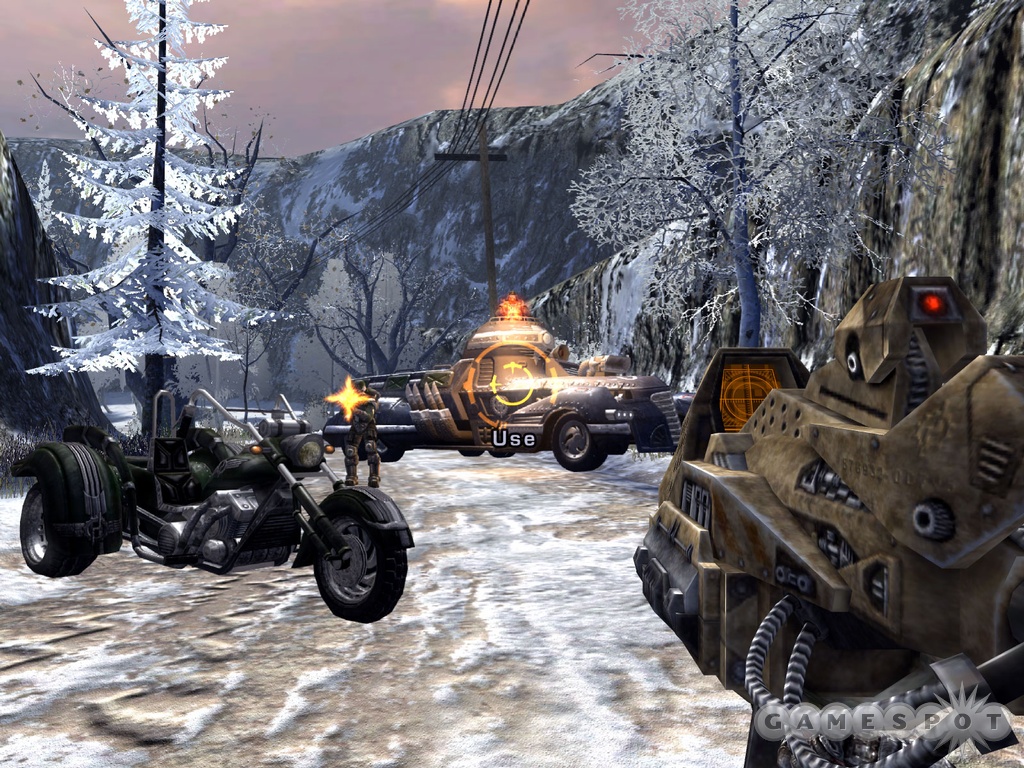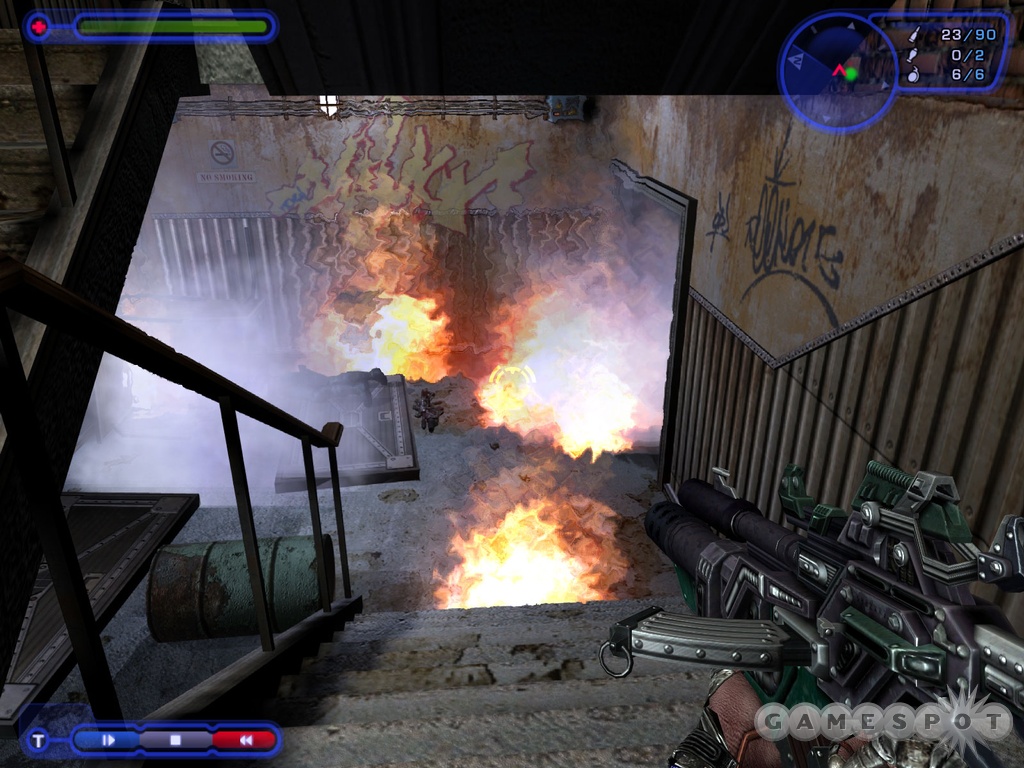TimeShift Designer Diary #3 - Avoiding Time-Travel Conundrums
Being able to slow, stop, and reverse time sounds simple, but put those time controls into a game and you have issues, as Saber Interactive discovered with TimeShift.
We've all heard of the famous time-travel puzzle that asks, if you go back in time and kill your father before he meets your mother, haven't you created a conundrum? Because if you were never born, how could you go back in time and kill you father to begin with? This goes to show that time travel can be messy, as the developers of TimeShift have discovered. They faced a different set of conundrums while creating their upcoming time-travel-based first-person shooter. We'll let them explain what those problems were, and how they resolved them, in the latest edition of our designer diaries.

Time Travel is Hard
Matthew KarchCEO, Saber Interactive
In past entries, I have spoken in some detail about what makes TimeShift unique. I really want to make clear that TimeShift is an evolutionary game. It is, at its core, a well-implemented shooter with an engaging storyline, great weapons, and solid artificial intelligence. The "cool" factor of the game, and what separates it from the pack, is the way that we have seamlessly integrated the abilities to slow, stop, and reverse time into the first-person-shooter mechanic. The trick for us was really to make sure it didn't feel like a bolt-on or a forced addition to the game. In order for us to accomplish this, we needed to design the game from the ground up with the TimeShift mechanic in mind. This means that every battle, every thought-provoking challenge, every weapon, opponent, and environment in the game was designed specifically to interact in a meaningful way with the ability to control time. Below, I am going to give you some examples of how game systems were designed to take advantage of the time-shifting feature.
One of the major challenges in developing a good first-person shooter is crafting believable opponent behavior. As challenging as this is with standard shooters, it is that much more complicated when you throw time control into the mix. How should an opponent react, for example, if you walk right past him while time is frozen? How should he react if he sees you and then you reverse time and hide?
The answers are clear: If time is stopped for an opponent, he should not notice you at all. And if you take it further and steal his weapon during time stop, he should act bewildered. If time is reversed, then the AI states should reverse as well. An opponent who has just noticed you can be reversed back to blissful ignorance. These are not simple things that just "happen"--they all have to be hard-wired into the AI code so that opponents act naturally and as expected in such situations. In addition, special animations have to be created and voice-overs must be recorded that accompany such behavior.
From a gameplay perspective, you can really see how the use of time powers and its interaction with AI can create some cool opportunities for gameplay. Imagine, for example, that you are severely outgunned. Why not stop time and sneak past some heavily armed opponents? What if you walk right into an ambush? Why not reverse time after they have pounced on you, get out of that trap, and strategize a better way around the obstacle? The use of the time powers and their interaction with the AI let you approach a challenge differently. This is one of the really cool aspects of the actual gunplay, and one that makes the game much less of a linear experience.
Another major design challenge is creating levels that work well with the time mechanic. Our level design lead, Sergey Larionov, has had to be very creative in crafting gameplay scenarios that incorporate time control. This is more challenging than it sounds.

Let's take another solid game, Call of Duty 2, for comparison purposes. In Call of Duty 2, as in most other shooters, battle intensity can be increased by spawning additional opponents in out-of-the-way places. This is why it can sometimes seem that the battles are lengthy, protracted struggles, which indeed they are. Of course, it is a cheat (of sorts) that creates the illusion of a massive army, but it is a standard tactic that works well and allows for gameplay that would not be possible were all opponents placed in a level from the start.
In TimeShift, this whole idea of spawning opponents is much more complex. Imagine that we spawned an opponent in a neighboring room, who then bursts into your room and starts firing. What would happen if I reversed time and followed this opponent back into the room that he spawned in? Well, I would see that he appeared from thin air. What if I stopped time and entered a room where opponents were supposed to spawn before I entered? In this case, they would spawn in front of me. As you can see, the challenges in crafting intense gameplay are greatly increased and have forced us to come up with creative ways to handle these issues. For example, we almost always spawn opponents at a distance greater than you can cover in the maximum amount of reversal time allotted. We have had to apply these principles to the entire game to ensure that the world we have created is as believable as possible.
Time to Kill
One of the coolest things about first-person shooters is the weapons. We have, in my opinion, some of the most talented game-weapon designers in the world, including a brilliant fellow named Anton Lomakin. Of course, I am biased, but when you see our weapons in the game, I think you will agree. One of the advantages of creating a universe from scratch is that we can be as creative as we want in our weapon design. We do not have to model realistic guns or worry about sticking to convention. Thanks to this, we were able to develop weapons that interact in cool and novel ways with the time powers. Some of these weapons include: 
Swarm grenade. This is a special "grenade" that is actually an intelligent weapon. Once released, it unfolds wings and searches out the enemy. When it locates the enemy, it hovers around him and fires. Imagine that multiple swarm grenades have been released and are surrounding you. Your only defense is to slow or stop time and take out as many as you can. Without time control they would likely lay waste to you very quickly.
Surge cannon. This is one of the largest and most powerful weapons in the game. Its primary fire mode works by shooting bolts of electricity that span from the weapon to the target. Imagine that you have been tagged by this weapon and a bolt of electricity is now quickly sapping your health. What could you do? Well, you could try to kill the shooter before you die, but your chances of success are minimal. Instead, how about stopping time, freezing the electricity in place, and seeking cover? What about reversing time to the moment before the shooter targeted you, and taking him out?
Bloodhound rocket. The bloodhound is a guided rocket launcher that works by allowing the enemy to target and track you. Imagine that you have been targeted and a rocket is incoming. As you run, the opponent guides the rocket to follow you. One direct hit, and you are likely a goner. What should you do? Well, let's say you stopped time; the rocket would freeze in the air and you could run and seek cover, or shoot it out of the air. What if you slowed time? The enemy would be unable to track you--his movements would be slowed down substantially. By using your time powers, you can avoid the rocket and take out the enemy.
Clutch grenade: If you have played Halo, you have seen a similar weapon called the plasma grenade. In Halo, if an opponent throws a plasma grenade and it sticks to you, you are pretty much dead. In TimeShift, you have an out: You can reverse time and reverse that grenade right off of you.
TimeShift's opponents have also been created specifically to interact with the time mechanic. Here are a few of the game's opponents and a description of how using the time powers can counter their tactics:
Warp guard. This enemy possesses an ability known as quantum teleportation that allows them to essentially teleport to another location. By utilizing time stop, it is possible to freeze the warp guard before teleportation and take him out. Utilizing reverse against the warp guard lets you bring him back to his previous location so you can fire as soon as he appears.
Flash guard. This opponent moves extremely fast. The best way to take her out is to slow or stop time to aim and fire before regular time flow resumes.
Storm guard. This guy has a large shield that covers the entire front of his body. The best way to counter the storm guard is to slow or stop time and rotate to his backside, where you can shoot him in his exposed area.
Thunder guard. This is one of the big bad guys in the game. He has a guided rocket that can track you as you move. The best way to counter his fire is to slow time and reduce his ability to track you, or to stop time, shoot the rocket out of the air, and kill the guard before time resumes.
By crafting opponent AI specifically designed to interact with time control, we enhance the value of the power itself. The bottom line of all of this is that TimeShift required us to think about design a little differently than we would for a more conventional shooter. We think TimeShift will appeal to those who enjoy solid first-person shooters with compelling storylines and fast-paced, frenetic gameplay. By adding time powers that are tightly integrated into the game, we are taking the experience up a notch and giving shooter fans a fresh experience in a genre that has seen few new elements in quite a while.
Got a news tip or want to contact us directly? Email news@gamespot.com
Join the conversation